“Well, we used the almanac. My mom, every time she got ready to plant, she'd go look at that almanac and see where the moon and where the signs was.” —Clyde Charles
For someone not accustomed to looking at one, an almanac or calendar that is meant to guide one’s farming and other activities is like looking at Sanskrit, and, in fact, some of the symbols look to be about that old. Comparing different calendars, each of which claims to be the most accurate, reveals enough similarities to make a person believe but enough differences to let a bit of doubt peek through the cracks.
In addition to the moon’s phase/quarter and zodiacal sign, many of these almanacs and calendars include weather predictions, fishing outlooks, sun and moon rising and setting times, places to record breeding dates of livestock and gestation charts, recommendations for first-aid care, when to cut hair, and a number of “special days,” most often of religious affiliation. The almanacs may also contain tips of various sorts, recipes, information on new plant varieties, advertisements, short articles on various topics, and even poetry and short stories. In all calendars or almanacs, there are typically pages that highlight good days to do certain things, such as planting aboveground or belowground crops, or when to kill pests.
What differentiates a calendar and an almanac is the format—almanacs are in book format and typically have more supplemental information (such as articles or recipes). Calendars are based on almanacs and offer some (but not typically all) of the information from almanacs.
Almanacs
We’ve all heard of “the farmer’s almanac,” but it turns out there are numerous farmer’s almanacs. Subtle differences in the names, as well as the dates they originate, distinguish them. Most employ their own astrologers, astronomers, and meteorologists. They typically contain information not only on gardening activities, but also about fishing days, egg-setting days, and articles on various topics. Each has its own slightly different tone, and of course they each have their own special (and always the most accurate) way to calculate things like their weather predictions. The summary below is certainly not exhaustive for all almanacs available, but provides a sample with which to understand some of the similarities and differences contained within.
The Old Farmer’s Almanac (founded in 1792)
And even members of our family have called when they were facing surgeries and they would ask us ‘Well where’s the sign going to be? What’s the best time of the month, next month, for me to have surgery?’ And of course we would go to the Old Farmer’s Almanac, which is kind of a handbook, I guess, for individuals that garden by the signs, and we would refer to that and say, you know, on such and such a day in October would be the best time to have that surgery performed.
Gary Easton
The Old Farmer’s Almanac (founded in 1792) is perhaps the best-known of the farmer’s almanacs. It has a pale yellow cover and features Benjamin Franklin and Robert B. Thomas on its cover. Robert B. Thomas was its founder, and he began the almanac (1793 was the first year it was published) after spending some years studying and being fascinated by astronomy.1 He aimed to make his almanac more accurate than the New England Almanac, produced by Isaiah Thomas (and his son) between 1775 and 1819. Prior to that, Benjamin Franklin had published the Poor Richard’s Almanack between 1732 and 1758 (which served as the basis for Robert Thomas). It is Franklin’s publishing of this work, the first of its kind, that is the reason he is honored on the cover. The Old Farmer’s Almanac was immediately popular when it came out and has remained quite popular, claiming to be “the oldest continuously published periodical in North America,” with a print distribution of over 3 million copies.2 It is published by Yankee Publishing out of Dublin, New Hampshire. Businesses can advertise within The Old Farmer’s Almanac, but it does not use a distribution model that features custom business advertisements on the cover.
The Old Farmer’s Almanac discusses differences between astrology and astronomy. It states that its best days are based on the astrological moon sign (using the tropical system), but it also provides the astronomical placement of the moon in its monthly tables. The gardening-related tasks assigned to dates in The Old Farmer’s Almanac are listed as: plant, transplant, and graft; harvest; build/fix fences or garden beds; control insect pests, plow, and weed; and prune. The geographical scope for gardening activities is the continental US and Canada, and it breaks that large area into four zones or areas numbered from south to north. It contains a detailed table listing most common vegetables/crops and summarizing the favorable dates for planting by the four areas. In addition, there is a separate “Best Days” table that includes numerous activities that are not related to gardening, such as baking, making sauerkraut, coloring hair, starting or ending projects, buying a home, etc. The detailed weather predictions are given for all fifty United States, with eighteen separate zones being designated.
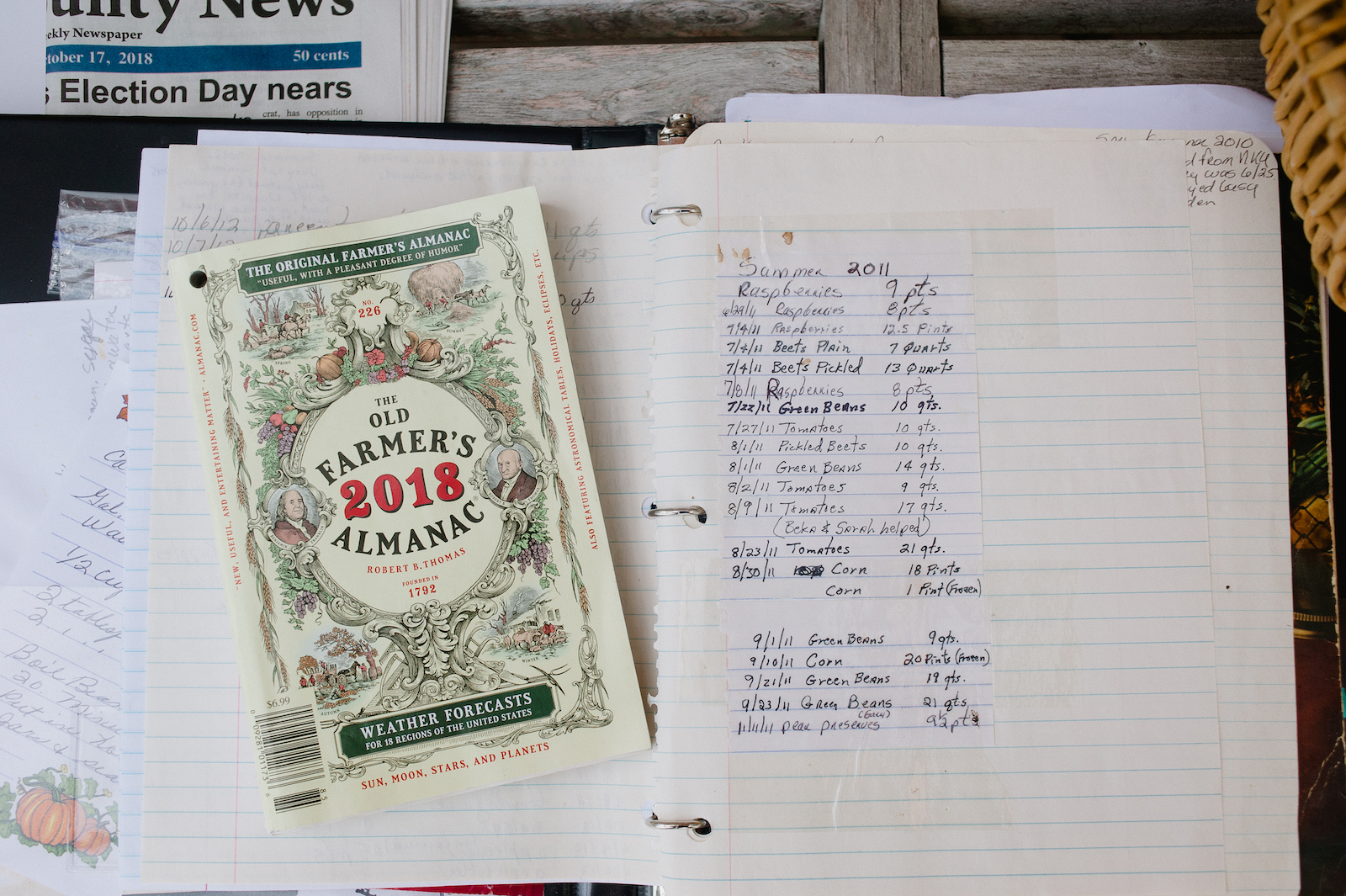
Farmers’ Almanac (since 1818)
This almanac was founded by David Young and is published in Lewiston, Maine. It is a considerably shorter publication than The Old Farmer’s Almanac. The cover is orange and features a rooster atop a weather vane. Its list of gardening according to the moon includes the following categories: plant aboveground crops, plant root crops, transplant, plant seedbeds, plant flowers, kill plant pests. It contains a “Best Days” table with many of the same activities in The Old Farmer’s Almanac, although Farmers’ Almanac separates them under the following categories: Cooking/Baking, Health & Beauty, Parenting, Home Maintenance, Outdoor Chores, Farm/Animal, Advertise, Travel & More. The table on which to base planting by the moon signs is astrological, but the astronomical placement of the moon is provided in the monthly pages, and they include the five additional constellations that are also included in The Old Farmer’s Almanac.3 There is also a fishing calendar and some recipes and general interest articles, although there are much fewer than in The Old Farmer’s Almanac. Weather predictions in Farmers’ Almanac cover the contiguous United States, separating it into six zones. Farmers’ Almanac often serves as an outreach tool for businesses—they are able to buy them in bulk at a reduced cost with their business information printed on the cover. Many businesses use this as a marketing tool with their customers, in the same way as the calendars discussed later in this piece.
Baer’s Agricultural Almanac & Gardener’s Guide
This almanac is published by John Baer’s Sons in Lancaster, Pennsylvania. Astronomical information is provided by Hart Wright Company in Lewiston, Maine.4 The cover changes in color depending on the year, but features an oval image with two women, wheat, and a single moldboard plow. It also features a rose in the top left corner. Although no one interviewed for the project uses this almanac, it is apparently the main one used by Amish farmers.5 Kentucky is home to many Amish communities scattered throughout the non-mountainous parts of the state, and many are well-respected and productive farmers. This almanac is unique in that there are only a handful of advertisements in it—on the inside covers (but none in the body). The entire publication except for the outside covers is simple black print on white paper. It can be obtained by sending a check in the mail or purchasing it at one of the establishments that carries it (presumably most commonly in Amish country). The one page it contains on planting provides the following categories: crops bearing yield above the ground, crops bearing yield below the ground, flower gardens, start seedbeds, and best dates for killing briars, poison ivy, weeds, and pests. Baer’s Agricultural Almanac also contains short articles on new varieties of vegetables, and like all others contains long-range weather forecasts. They cover the contiguous United States, but do not specifically designate certain regions, summarizing activities instead broadly for: Southern States, the Northeast, East Coast, Carolinas, Great Plains, Rockies, etc. Its monthly tables include the moon’s place as being one of the 12 zodiacal constellations.
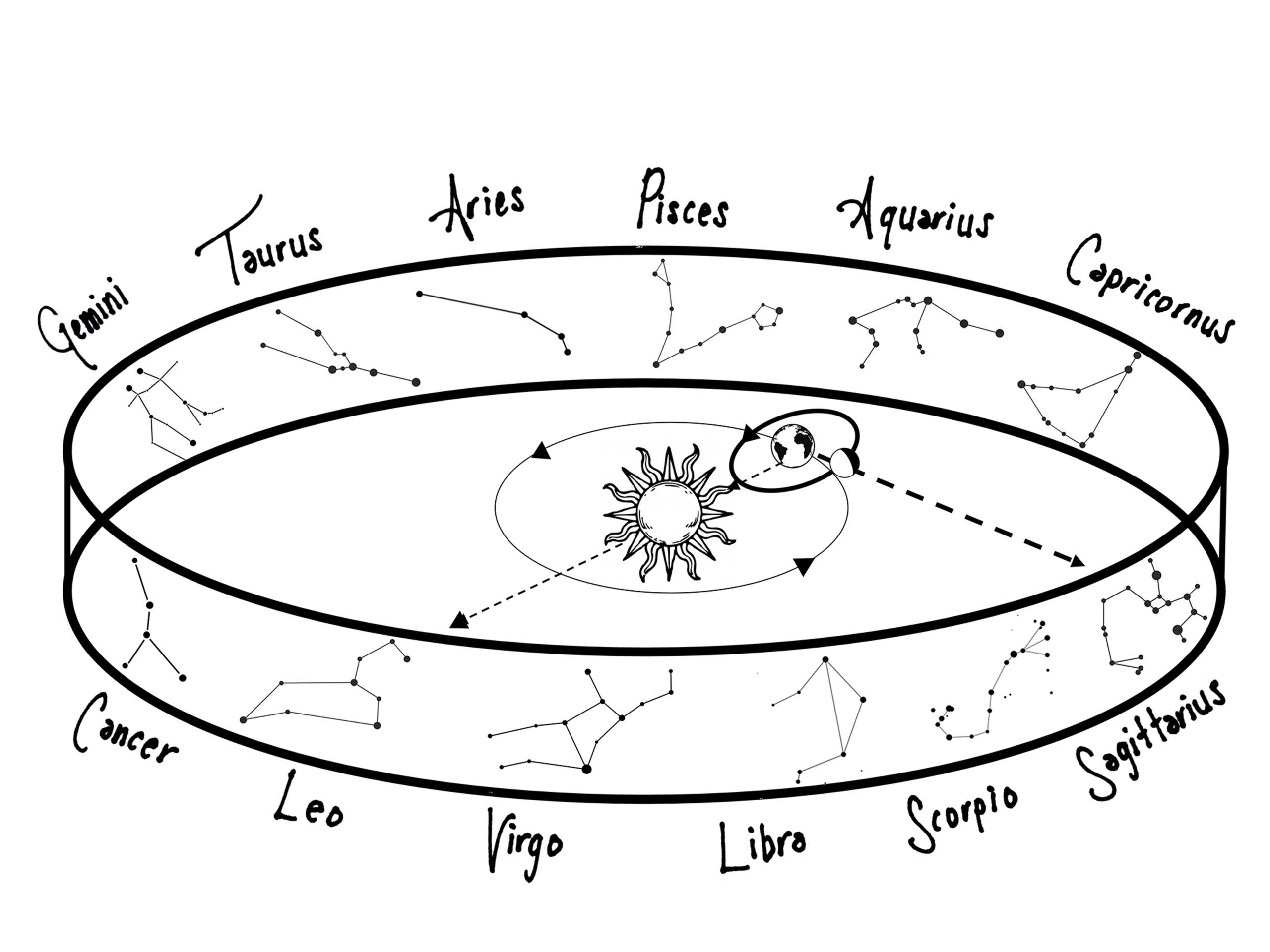
Llewellyn’s Moon Sign Book (Published Annually since 1905)
My moon sign book is . . . really a unique book. It helps you figure out, you know, if you want to cut your hair at a certain time to increase growth or decrease growth. . . . We use it for advertising and even, you know, you can know when to cut the timber like I’ve done that before . . . I mean, it’s just an incredible amount of information. . . . They’ll have you look at the aspects where the planets are and what moon sign it’s in. And also if it’s a good day for you, there is either a big U, a big F or a little u or a little f and sometimes nothing. So you know when you pick . . . for traveling you would want to pick a good sign for you where it was a big F, so you would have a favorable day.
Jane Post
The first author of this almanac was a man named Llewellyn George, who became a well-regarded name in the world of astrology. It is more extensive than the previously discussed almanacs, chockfull of astrological wisdom and astronomical information, and is published by Llewellyn Publications out of Woodbury, Minnesota. Its contents are based on the tropical zodiac system, and it features extensive information about doing just about anything. The subtitle “Plan Your Life by the Cycles of the Moon” explains precisely what it provides guidance on. It features a weekly almanac section with the exact times for each moon sign and the activities that match each one, as well as space to take notes. It also contains many articles and explanations for astrological phenomena such as when the moon is “void of course” during transitions between each of the twelve signs, and states “Plans or decisions made now often do not pan out.” The book also features information on when planets are in retrograde, with Mercury being one that “rules thought and communication, so it is advisable not to sign important papers, initiate important business or legal work, or make crucial decisions during these times.”6 Its “Good Timing” monthly tables are quite extensive, and it offers even more guidance in the section on choosing the best time for activities (which are much more wide-ranging than covered in the almanacs previously discussed.) Weather forecasts in Llewellyn’s Moon Sign Book cover the US, which is broken into eight zones. The predictions are given for each quarter of the moon’s cycle (or each week) in the year.
The Biodynamic Almanac/Calendar
Biodynamics originated in Germany and it’s very precisely laid out for you. And so, in a way that doesn’t aid you in learning or understanding how these connections were made when you go by the calendar, because you just look at the calendar—oh, it’s a flower sign, can’t plant. You know, it’s all determined for you . . . The detail on a calendar that they get into, it’s pretty intense . . . One of the benefits . . . is that the calendar is just packed full of information. It’s gotten me to understand the fluid nature of the Zodiac and the stars in the sky and appreciate new constellations and understand and see them.
Susan Lein
Rudolf Steiner (1861–1925) was a famous Austrian scientist, philosopher, and thinker, who developed a belief system termed Anthroposophy or Spiritual Science, which viewed the earth as a living being, under many great cosmic forces.7
After being asked to do a course about his approach focused on agriculture, in 1924, he gave a series of eight famous lectures. These lectures are summarized in the book Agriculture, whose English translation was published in 1993. Steiner’s lectures would become the basis for biodynamics, which provided a counter to the prevailing mechanistic and empirical approach to agriculture. Reading Steiner’s work can be quite challenging, but it is clear that the belief system emphasizes interactions between the sun/earth/moon and other planets, with the moon’s influence being mediated through water.
Maria Thun (1922–2012) spent decades, starting in the 1940s, testing out Steiner’s theories. She directed and took part in trials with her husband Walter (and other biodynamic farmers in her region) to test everything related to agriculture: planting dates, harvesting dates, dates for creation and application of composts and biodynamic preparations, etc. She studied astronomy as she conducted this work, which allowed her to look for correlation with cosmic phenomena. Her studies resulted in a system of planting based on the zodiac, with each of the twelve constellations designated as having one of the following affinities: root, leaf, flower, or fruit. Her system was based on the constellational zodiac, so the time period associated with each sign varies by quite a bit and overlaps very little with astrological calendars.8 She also discovered that the moon’s perigee and nodes have negative effects. This work became the basis of the biodynamic calendar.
There are two main printed sources for this calendar. They follow the same general principles just laid out (in terms of which signs favor leaf, fruit, root, flower), but vary some in their calculations and the specifics of unfavorable times. The Maria Thun Biodynamic Almanac is available in 27 languages, attesting to its widespread use.9 TheStella Natura biodynamic calendar is another one based on Thun’s work, and is the one routinely used by Susana Lein.10
Each of these have monthly pages that list the times (to the hour) for each constellation as well as solar, lunar, and planetary aspects. There are no universally bad or barren signs in this system, those periods are instead dictated by eclipses, nodes, perigee, etc. and are shown as unfavorable times, scattered throughout each month. Both present daily information in graphical form for easy interpretation. Both sources also include diagrams in the back that depict the constellations of the zodiac as well as those just outside of it. For the Maria Thun Biodynamic Almanac, monthly diagrams are included that show the moon’s celestial placement each day of the year, as if the moon is riding a wave on the horizon. In the Stella Natura calendar there is one diagram for the year with placement of the sun indicated for the solstices and equinoxes.
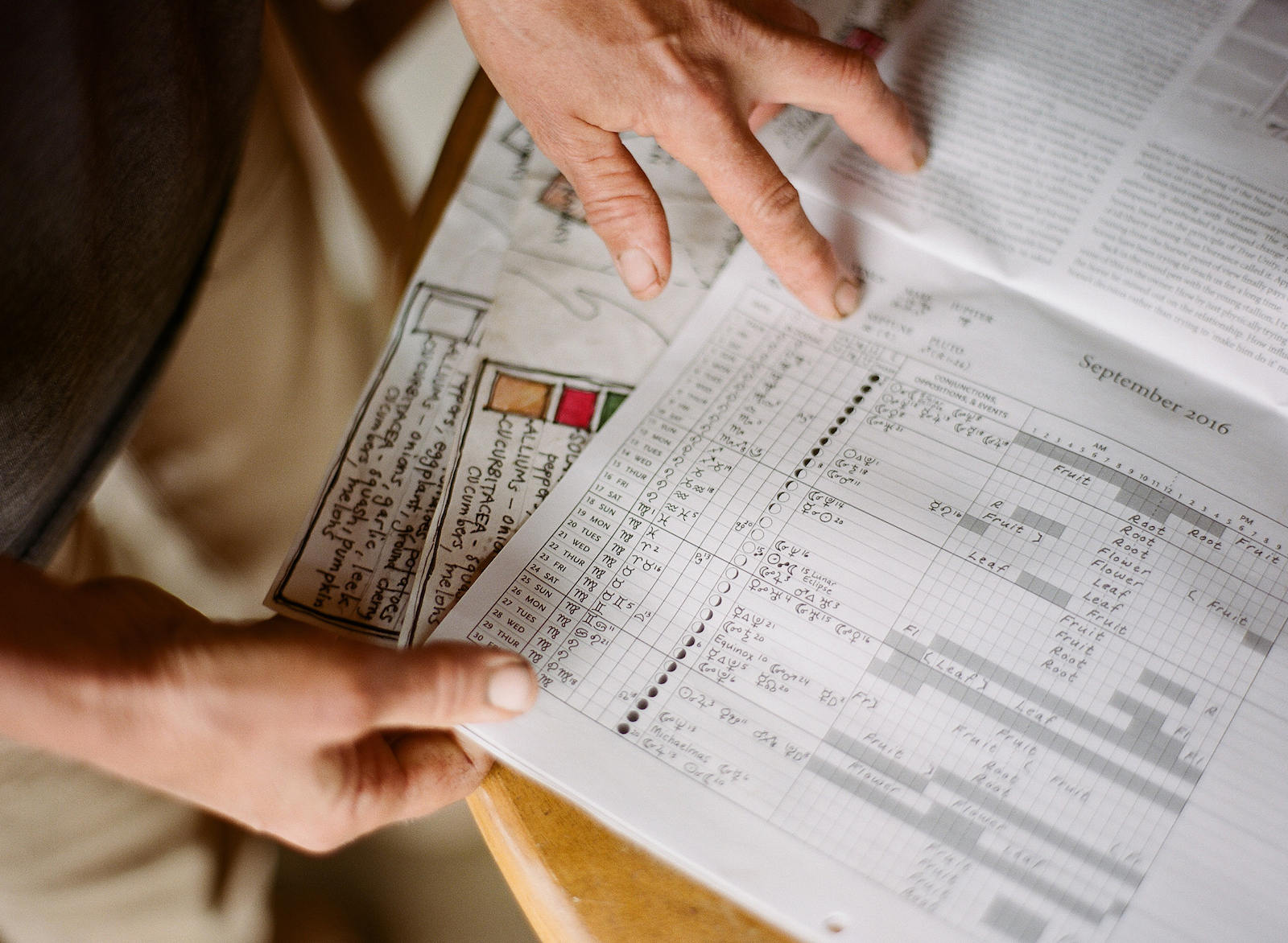
Calendars
While many of the almanacs have publishers located in the northeast or central part of the country, most calendar publishers today are southern, and in particular are printed in or have roots in Tennessee. There are three companies that publish calendars which were pulled out during the interviews done for this project.11 All claim to be the “original almanac calendar” and started in 1876. One source is the American Calendar Company in Clarksville, Tennessee. Another is Ramon’s Brownie Calendars in LeRoy, New York, although the first Brownie calendar was printed by the Brown Manufacturing Company in Greeneville, Tennessee. It was an advertisement for their medicines and featured a little doctor carrying a bag of Ramon’s pills. The company was later bought by David Grayson in LeRoy, New York, and although the company was no longer doing patent medicines, the calendars had become a staple throughout the South and Midwest. Thus, the calendar printing continued. It apparently continued in Greeneville, Tennessee, as well, with the Calendar Company still printing today and sharing its roots to Ramon’s. In addition, there is a calendar put out by Francis & Lusky Company of Nashville, Tennessee. This calendar is mentioned in The Foxfire Book, and the company continues to print promotional calendars today. The Weather Vane [Almanac] Calendar is another offering which is published by Drum-Line (formerly Drummond Printing, Inc.) out of Stuttgart, Arkansas.
These calendar companies sell wholesale to distributors who are able to customize the top section that shows on each month to advertise their business. These calendars became an early marketing or promotional tool for numerous businesses throughout the US. Because these calendars are designed to promote the local business that distributes them, rather than the calendar company itself, it is sometimes difficult or even impossible to locate the company name on the calendar.
In these calendars, each day typically contains the following: the moon’s sign (the 12 standard zodiac constellations), sunrise and set times, moonrise (and for some, set) times, weather predictions, fishing outlook, and length of day. Some include gardening information on the days, others include that in a section for each month. It is typically not clear which zodiacal system (tropical, sidereal, or constellational) is used by each calendar, or what almanac they are based on.
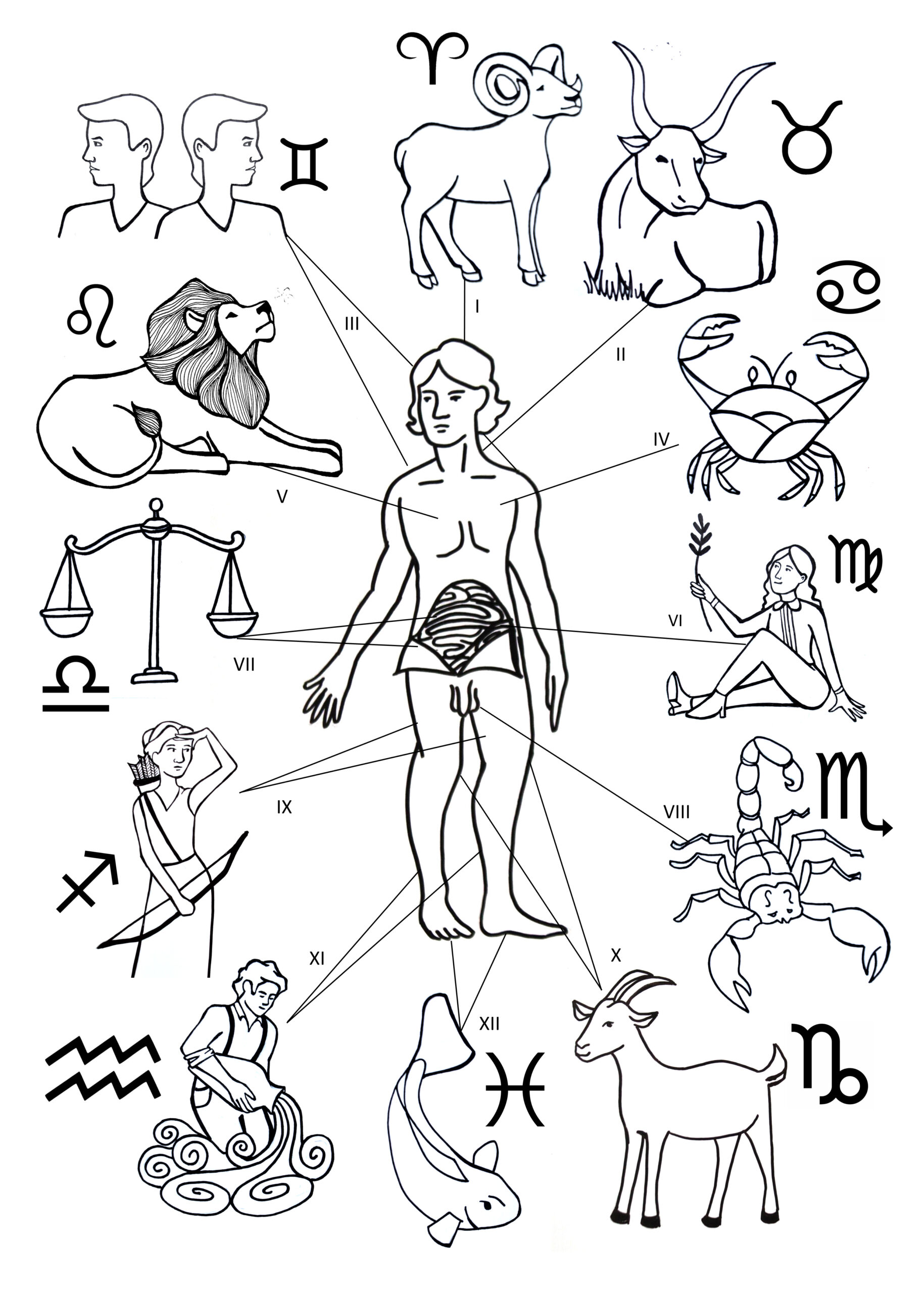
Calendar Culture
“Growing up, all the little country stores—and I’m gonna say, most of them were maybe 10 miles apart—they were frequent, they would have in the fall what everybody referred to as a Brownie calendar. Their loyal customers, as they came and went, that was their little gift to them. And the Brownie calendar was real detailed in the different folklore or legend or whatever. It had your signs, good nights for fishing, the moon cycles and phases, it’s got all that information—it is an almanac. A lot of people use those, certain signs you don’t plant in, certain signs you do plant in, and they used those calendars.”
Anita Tolliver
Perhaps as important as the information in the calendar itself is the ritual of getting one every fall for those who use them. Everyone has their favored source that they rely on each year. While it used to be that such calendars were available at all the local general stores or even banks, the most common sources today seem to be hardware stores and funeral homes. These calendars have a space at the top that advertises the business. In conducting interviews for this project, it became clear quite quickly that the calendar is often seen as an important guide for gardening activities as well as a place to keep records. More than one person interviewed revealed a stack of previous year’s calendars that they had hung on to because of the gardening records they held. Some spoke of the excitement of getting the next year’s calendar around Halloween or early November. They are seen as a hot commodity, and by the time spring comes around, they can be quite difficult to find. One person I interviewed gave me my own copy of the one he uses, explaining that he’d had to call in some favors to get it and the folks that worked at the farm supply store had to go in the back and find it—after all, our interview was in early May.
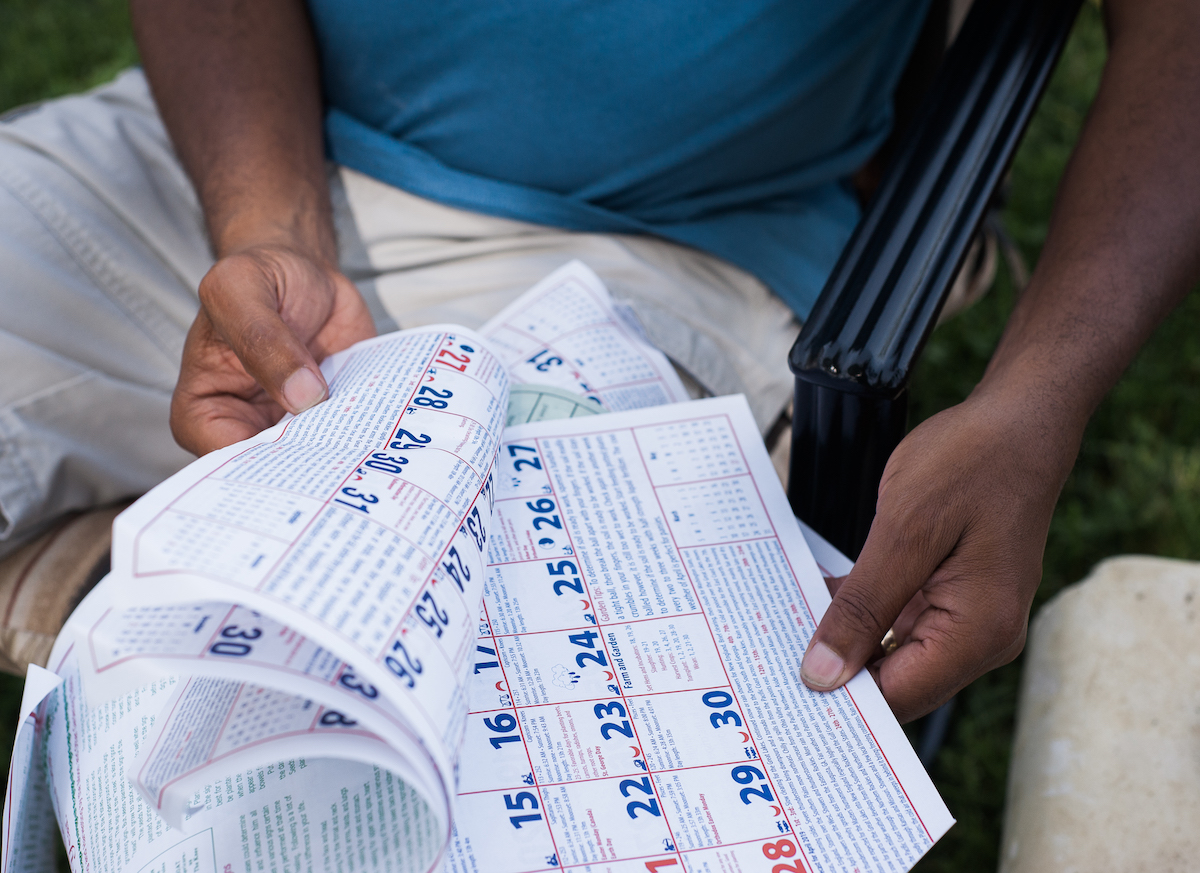
Testing the Claims
For the most part, all almanacs and calendars claim to be the best, and ascribe their large distributions as testament that they work. T. E. Black says, in his “Lifetime Planting, Business, and Fishing Guide,” the following: “I made a 13-year test for the right signs for planting all crops, business and fishing and other things and for the correct dates I found The Ladies Birthday Almanac and others that correspond with it are most correct.”12
The Old Farmer’s Almanac starts its weather section with a summary entitled “How Accurate Was Our Forecast Last Winter?” which summarizes how the predictions made in the previous year compare to the actual weather. In this summary, a percentage is given for the accuracy in change of precipitation and temperature from the previous winter across the eighteen regions. One city is shown for each of the eighteen regions with corresponding data, although the cities that are shown change from year to year. The almanac claims a long-term 80 percent accuracy.
In Planetary Planting, Louise Riotte gives numerous accounts of personal successes and failures to convince the reader of following her system, which closely aligns with that of the Llewellyn’s Moon Sign Book.13 She opens her book with a tale of wading out “when the garden was a sea of mud” to plant her corn, despite her husband’s ridicule, for “it was the right sign and the right phase and I was bound and determined to plant.” And (of course), she ended up with a wonderful sweet corn harvest, while all her neighbors experienced failures. Riotte discusses her experiences with regard to planting by the signs and doing so organically for over thirty years; recommendations for when to start and turn your compost heap are included. She says, “Organic gardening practices teach us how to plant in harmony with nature; astrology teaches us when. The knowledge of how to plant combined with when to plant will give us much better results than when one is used without the other.”14
If you are interested in seeing a published record of test results, the many published works of Maria Thun are worth a look. In Results from the Biodynamic Sowing and Planting Calendar, Thun describes decades of planting trials done to arrive at her calendar system. Although the initial trials she did were with radish, she used a wide array of plants over her long tenure, and the variety of work covered is quite extensive. The Biodynamic Year is a more recently published work that adds even more decades of experience to her tenure. The depth of her work and its record is unrivaled. As an example, for her studies on making compost, the variables being tested include: starting with different animal manure types, collecting the manure on different days, and applying the finished products on different days. Her work covers oil crops and their yield, when to prepare and apply different biodynamic preparations, etc. She also studied beekeeping and winemaking quite extensively. Her family carries on this work and continues to publish her writing.

There are a few examples that come up rather frequently which could provide for some interesting tests if you’d like to conduct your own: cucumbers planted in flowering signs are said to be all flowers and no fruit. The ears of corn planted in the light of the moon (especially during the first quarter) will stay upright and rot, whereas those planted later in the cycle will drop down so they shed water better and don’t rot. And finally, potatoes—in terms of both planting and harvesting—are said to produce quite different results depending on which side of the full moon they are done.
From Sown in the Stars: Planting by the Signs by Sarah L. Hall (University Press of Kentucky, 2023).
Sarah L. Hall is associate professor of agriculture and natural resources at Berea College. Her scholarly articles on the restoration of native forests and grasslands in Kentucky have been published in a wide range of journals, including Restoration Ecology and New Forests.
Header image: Julie Maruskin compares the alignment of two older almanacs.NOTES
- For a brief story of how The Old Farmer’s Almanac came to be, see the article Janice Stillman et al., “The Life and Times of Robert B. Thomas: Starting the Old Farmer’s Almanac,” April 21, 2020, https://www.almanac.com/extra/life-and-times-robert-b-thomas (accessed March 18, 2021).
- Old was added to the title in 1847, when Thomas died and his successor John H. Jenks took over as editor.
- See note 10 from chapter 2.
- It states that it is, “Carefully calculated for the Meridian of Pennsylvania and the adjoining States by Hart Wright Company, Lewiston, Maine, with Weather Predictions for the U.S., Sun and Moon Tables, and additional astronomical information for all parts of the nation. Inquiries about astronomical data should be mailed direct to Hart Wright Company.”
- Julie Maruskin referenced this.
- Aaron Lawrence, Ed., Llewellyn’s 2018 Moon Sign Book (Woodbury, MN: Llewellyn Publications, 2017), 133.
- Steiner was prolific throughout his lifetime; he wrote and taught on how his belief system applied to all areas of study. His name is also well-known for establishing the system of education that Waldorf schools follow.
- Libra is shortest (at 29 hours per cycle) and Virgo is the longest (at 77 hours per cycle). Very little of the constellational zodiac overlaps with either the sidereal or tropical astrological zodiac.
- The North American edition is printed by Floris Books.
- It is edited by Sherry Wildfeuer and published by Camphill Village Kimberton Hills, since 1978.
- There also previously was a Cardui Calendar (which differed by displaying two months per sheet) put out by the Chattem Drug and Chemical Company of Chattanooga, TN, who also published The Ladies Birthday Almanac, but production of the two ended in 2012, after 122 years.
- This statement comes from Wigginton, The Foxfire Book, 213. The Ladies Birthday Almanac was produced by the Chattanooga Medicine Company between the years 1890 to 2012 to promote its products.
- Riotte, Planetary Planting, endorses Llewellyn’s Moon Sign Book as a reliable calendar/almanac to use.
- Riotte, Planetary Planting, 36.

